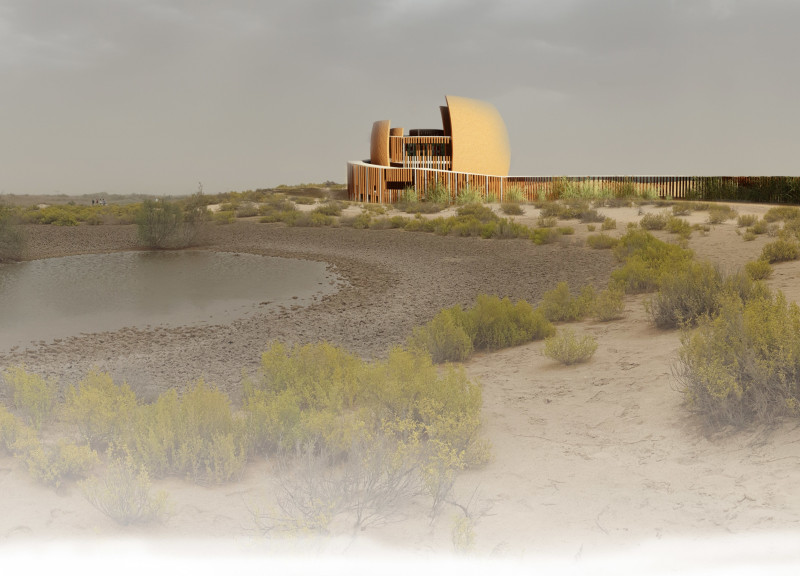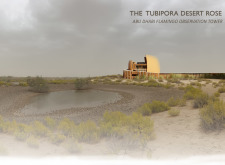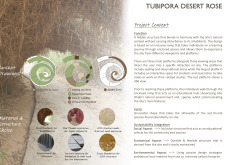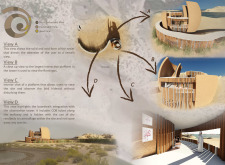5 key facts about this project
The primary function of the Tubipora Desert Rose is to provide a space for birdwatching and education about local wildlife and habitats. The design incorporates three major platforms: a viewing platform for observing flamingos, an educational ramp that offers informational displays, and an interactive area for visitors to engage with researchers. This multi-functional design emphasizes user interaction and promotes awareness of the area's ecological significance.
Design Elements and Materiality
The architectural approach is characterized by a spiraling pathway that intertwines with its environment. This pathway provides varying vantage points and allows for an immersive experience, blending seamlessly into the surrounding landscape. The design draws inspiration from the local flora, particularly the red thumb plant, which informs both the aesthetic and structural qualities of the tower.
Material choice plays a significant role in the design's success. The project utilizes dried reedclads for the boardwalk, ensuring that the structure harmonizes with its natural surroundings while showcasing sustainable building practices. Compressed earth blocks are used in the ramp and tower, reflecting traditional methods while minimizing environmental impact. Steel columns provide structural support, while precast concrete ensures stability and longevity. These materials underscore a commitment to sustainability, using locally sourced options that benefit the region's economy.
Innovative Design Approaches
What distinguishes the Tubipora Desert Rose from other similar projects is its emphasis on integration with the surrounding ecology. The curvilinear form of the structure not only enhances visual aesthetics but also enhances the flow of foot traffic, ensuring minimal disturbance to the local habitat. Additionally, the educational components integrated into the design provide a unique opportunity for visitors to engage actively with their surroundings, fostering a deeper understanding of the ecosystem.
The tower is also designed with passive strategies for environmental consideration, optimizing natural ventilation and using natural light. Water features surrounding the structure further enhance the habitat for wildlife while creating a serene space for visitors.
The Tubipora Desert Rose embodies a thoughtful collaboration between architecture and nature, creating an inviting platform for observation and education. For more in-depth insights into the architectural plans, sections, and overall designs, readers are encouraged to explore the project presentation to appreciate the full scope of this innovative endeavor.


























